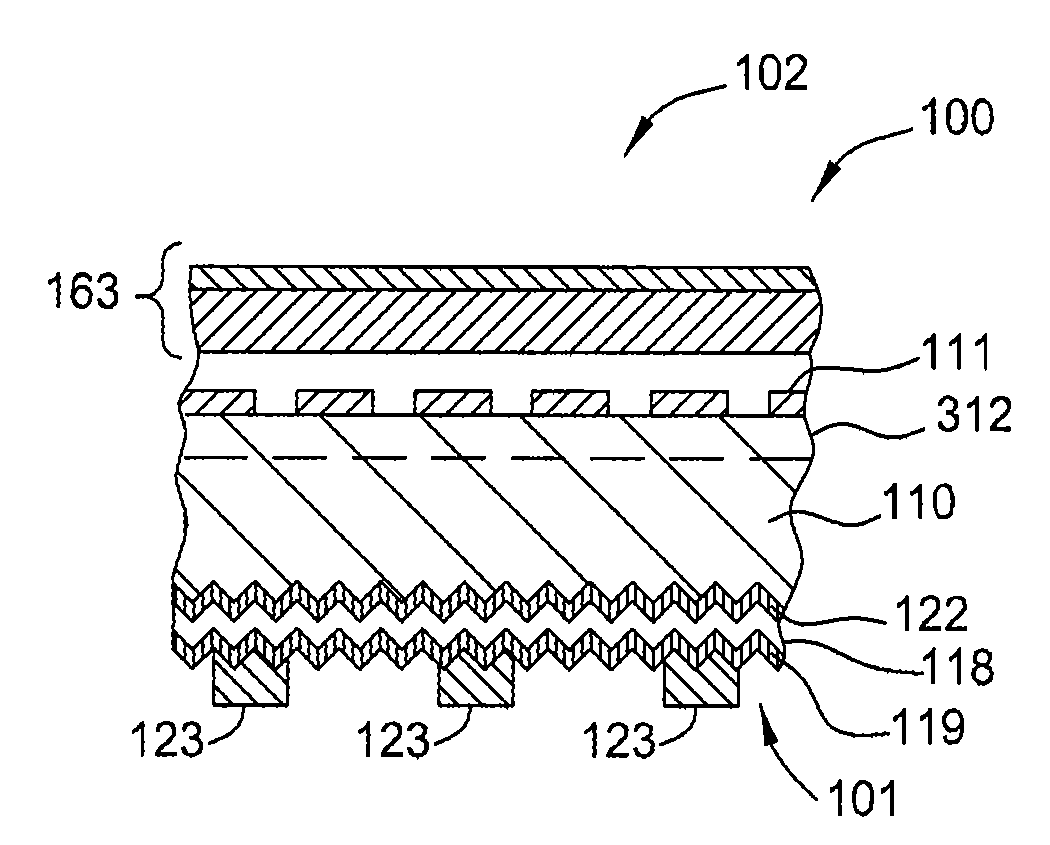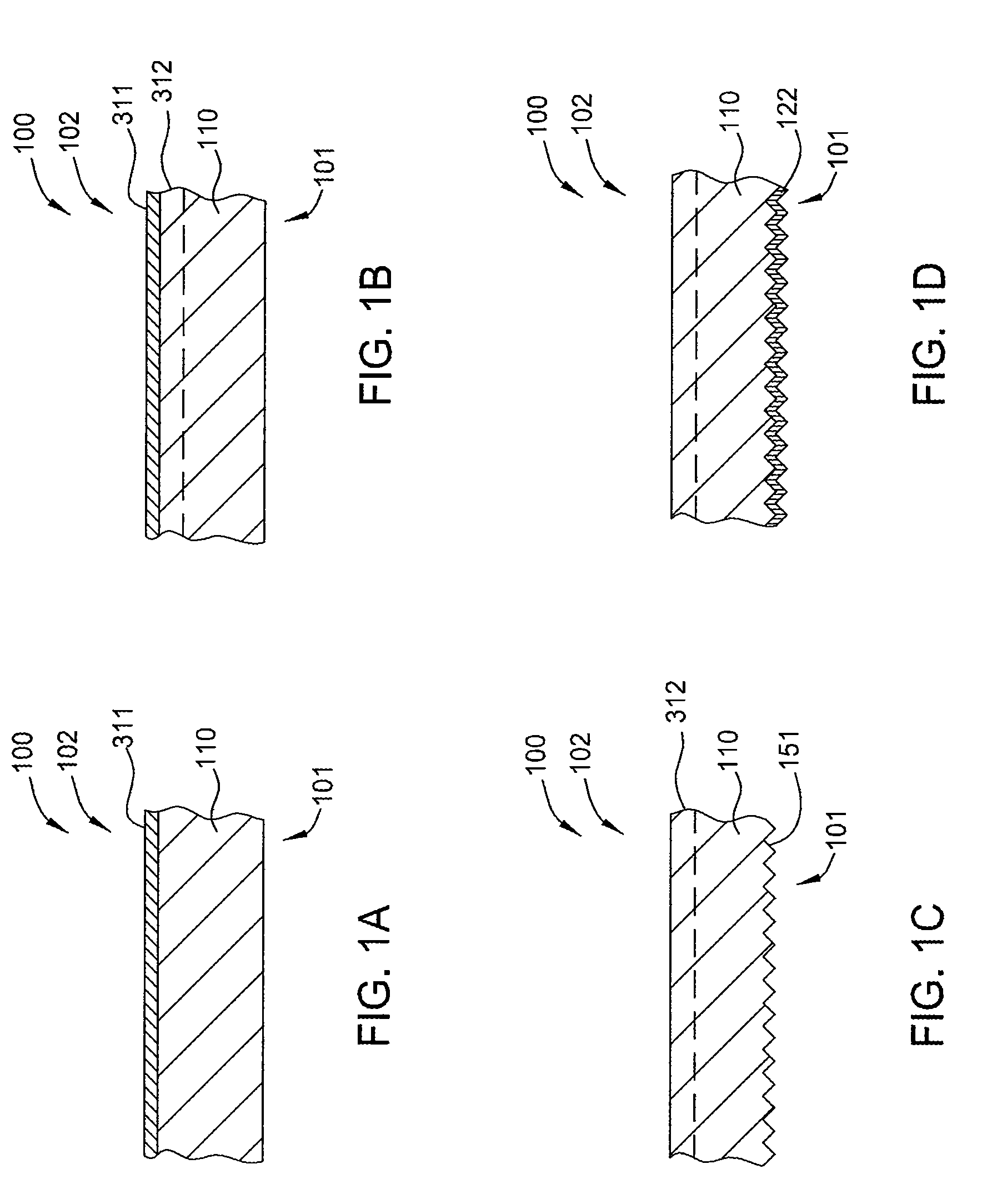Hybrid heterojunction solar cell fabrication using a doping layer mask
a technology of heterojunction and solar cells, applied in the field of photovoltaic cell fabrication, can solve the problems of prior manufacturing methods and add to the cost of solar cell completion, and achieve the effect of preventing substantial etching of the back surfa
- Summary
- Abstract
- Description
- Claims
- Application Information
AI Technical Summary
Benefits of technology
Problems solved by technology
Method used
Image
Examples
Embodiment Construction
[0022]Embodiments of the invention contemplate the formation of a high efficiency solar cell using a novel processing sequence to form a solar cell device. In one embodiment, the methods include the use of various etching and patterning processes that are used to define active regions of the device and regions where the device and / or contact structure is to be located on a surface of a solar cell substrate. The method generally includes the steps of forming one or more layers on a backside of a solar cell substrate to protect the backside of the substrate from being attacked during the subsequent process, and provide a stable supporting surface when the front side regions of the solar cell are formed. Solar cell substrates (e.g., substrate 110 in FIG. 1A) that may benefit from the invention include substrates that may have an active region containing organic material, single crystal silicon, multi-crystalline silicon, polycrystalline silicon, germanium (Ge), gallium arsenide (GaAs),...
PUM
| Property | Measurement | Unit |
|---|---|---|
| Temperature | aaaaa | aaaaa |
| Electrical conductivity | aaaaa | aaaaa |
| Efficiency | aaaaa | aaaaa |
Abstract
Description
Claims
Application Information
 Login to View More
Login to View More - R&D
- Intellectual Property
- Life Sciences
- Materials
- Tech Scout
- Unparalleled Data Quality
- Higher Quality Content
- 60% Fewer Hallucinations
Browse by: Latest US Patents, China's latest patents, Technical Efficacy Thesaurus, Application Domain, Technology Topic, Popular Technical Reports.
© 2025 PatSnap. All rights reserved.Legal|Privacy policy|Modern Slavery Act Transparency Statement|Sitemap|About US| Contact US: help@patsnap.com



